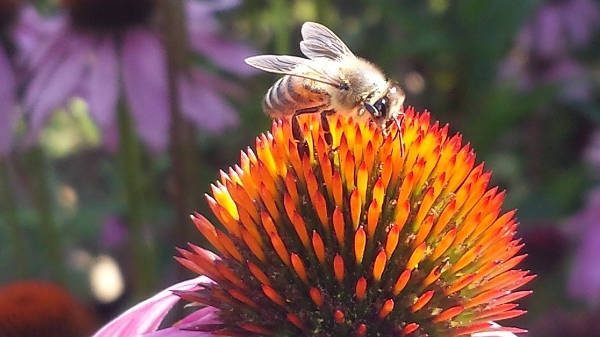By Dana Sargent
Vice President, North American Regulatory Affairs — Bayer Crop Science Division
As a mom and someone responsible for feeding my family, I know the importance of having ready access to safe and nutritious food. As an employee of Bayer working with our regulatory agencies, my job is to ensure that the technologies we develop can be used by farmers to safely produce the crops that feed our nation and the world. A preliminary risk assessment for imidacloprid from the U.S. Environmental Protection Agency and Canadian Pest Management Regulatory Agency, brings everything full circle, and shows that we can, in fact, grow safe, nutritious food in an environmentally sustainable way.
Imidacloprid is the first of several “neonic” insecticides that have helped revolutionize how farmers protect their crops from pests. Neonics have been widely adopted by growers because they are effective and because they can be used in many different ways which helps growers minimize harm to beneficial insects, for instance. In short, they are exactly the type of technology we need to help feed our families and protect our environment.
You may have heard of neonics in the context of bee health as some have raised concerns that these insecticides might kill these beneficial insects. Bees are critical to agriculture. They help pollinate many of the fruits and vegetables that we eat every day. It might sound obvious, but, as one of the largest agriculture companies in the world, Bayer believes bees are a pretty big deal.
And that’s where these new reports from EPA and PMRA come in. Regulatory agencies constantly review these products based on the latest scientific data to ensure they pose no undue risk to people or the environment. In these assessments, the agencies wanted to determine if these pesticides posed a risk to honey bees.
With hundreds of studies conducted and a history of safe use on farms, lawns and landscapes across the world, we know more about neonics and honey bees than any other pesticide group. Even so, the new field studies conducted as part of EPA and PMRA’s current reviews may be the most comprehensive ever. More than just being comprehensive, the science conducted in these assessments is very sound. The agencies have spent years overseeing these studies and should be applauded for that work.
So, what did they find? In general, the assessment is good news for bees and for farmers. Let’s look at a few key areas:
1) The agencies set a level where honey bee colonies can tolerate being exposed to the neonic, imidacloprid, for extended periods at or below which no effects would be expected to the colony.
2) That level is set at 25 parts per billion which might not mean too much until you consider that typically bees are exposed to below 20 ppb when that pesticide is applied into the soil and even less (lower than 5 ppb) when crops are grown from a seed treated with the pesticide. In their everyday lives, bees just aren’t that likely to encounter amounts of imidacloprid that would come close to posing a threat to their colony.
3) EPA and PMRA found, whether spraying, applying to the soil or treating seeds by and large imidacloprid did not pose risks to honey bee colonies, particularly on common crops like corn, potatoes, tomatoes, cabbage, broccoli and berries. The agencies said they are continuing to work on crops like soybeans, stone fruits, melons and tree nuts.
4) EPA concluded that when used on citrus and cotton imidacloprid might pose a risk. Note that they didn’t say they are a risk to honey bee colonies (like many media headlines stated). That’s because there are many ways farmers can use these neonics on cotton and citrus crops in ways that don’t pose a risk to honey bee colonies. In fact, there are many restrictions in place that already do this and Bayer has proposed several more to EPA to consider that would put in place additional protections for bees. I’m looking forward to working with them further on this.
EPA and PMRA note that this assessment is still preliminary and similar assessments are on-going for other neonics. We are also continuing to review the reports in more detail and we will continue to provide data to the agencies as needed and look forward to seeing the results of this rigorous, science-based approach. As an employee of an innovation company, it is absolutely critical that we support and maintain a science-based regulation over political whims, allowing us to continue investing in newer, better and safer technologies. And as a mom, I want to know that I’m doing the right thing for my family.
Ultimately good science should matter to everyone. We need to produce more food as the global population continues to grow and we’ll need to do it by using less resources and protecting the ones, like bees, that we have. The only way we can do that is if we continue to push the scientific boundaries for new technology while ensuring effective environmental stewardship.










